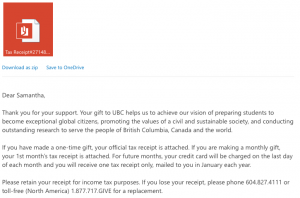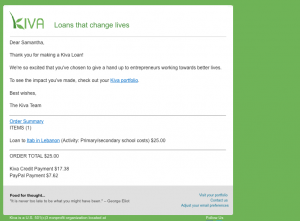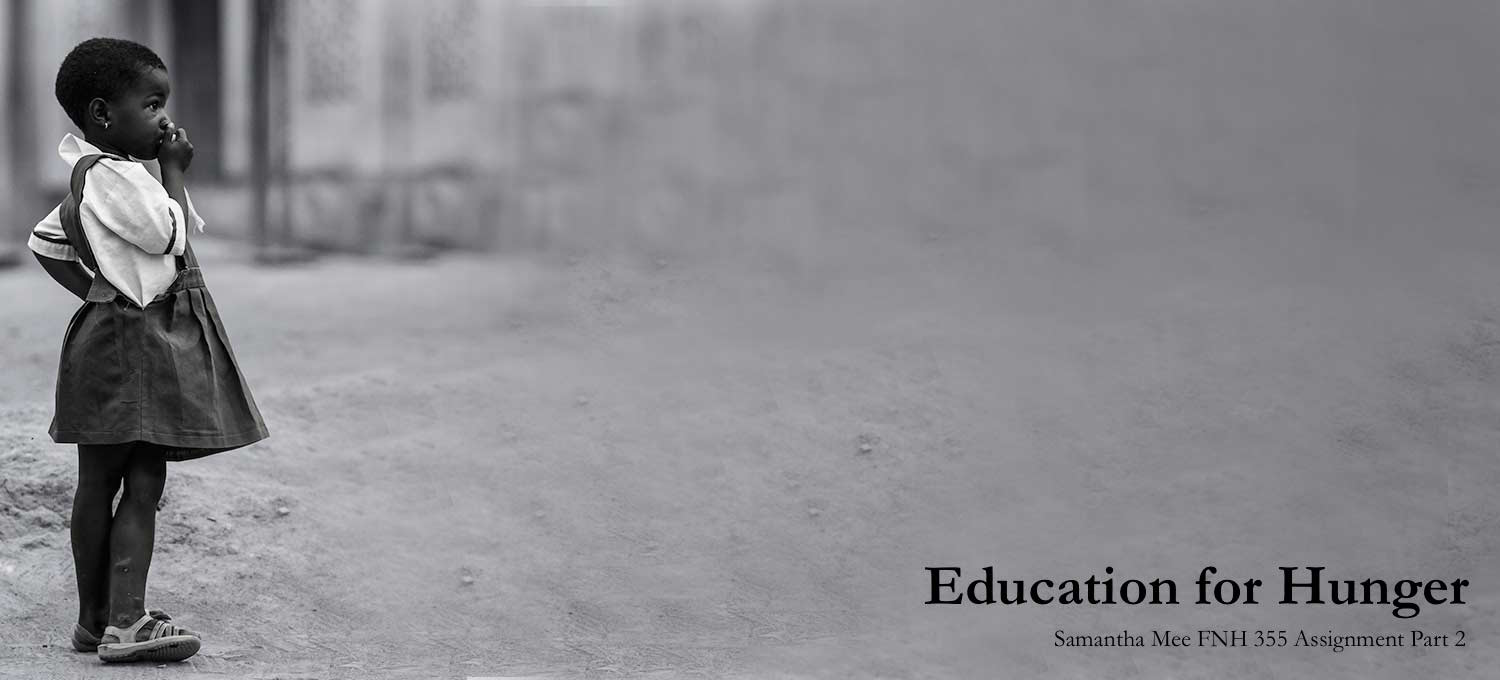
In order to help stop world hunger, I donated $35.00 to the organization Kiva, which permitted to me to loan $25.00 to a woman in Lebanon who was seeking an education. Additionally, I donated $15.00 to the Humanities 101 fund of UBC.
My donations will make a small impact by contributing to two funds directed towards education. It is my hope that my actions will help individuals escape poverty by developing resourceful skills needed to improve their work and living standards. I also believe that it will yield a positive productivity of this population, that will eventually stimulate economic growth. The EFA Global Monitoring report stated that for every $1.00 spent on education, between $10-15.00 would be generated in economic growth (Farah, 2007). Additionally, there is a widespread consensus that the issue of malnutrition is a large problem for the homeless. Studies have shown that although homeless people were able to obtain enough food, they had a low dietary adequacy score, which suggested that although the quantity of food requirements were met, the quality of their diets were inadequate (Champaner et al., 2009). A study conducted that looked at the nutrition knowledge of the homeless and subsequently, the nutritional value of their food selection, showed that improvements were made after they received education (Champaner et al., 2009). For example, participants demonstrated improved nutrition knowledge about “which food has the most calories.” In the pre-test of such question, only 33% of participants were correct, compared to the 63% that were correct in the post-test. Based on the above knowledge, we can see that education becomes an essential investment.

While we can see the benefits that would arise from either donations, both actions do have limitations. For example, there is no guarantee that a student enrolled in Humanities 101 will complete the course. In the program’s inaugural year in 1998, 25 students were admitted into the course, but only 17 completed it. External (or internal) issues could arise that may cause a student to drop out of the program. As the number of applicants exceeds the number of available spots increasingly, the funds raised can go towards another student. Another limitation garnered to my second action, which was donating to Kiva, arises when regions have experienced natural disasters. It is often found that these disasters limit a person’s ability to pay a loan in the near future. Kiva provides a timeline for all loanees that outlines when you can be expected to be paid back. Despite these limitations, I believe that both actions will positively contribute to the eradication of world hunger.
Literature Cited
Champaner, E., Myung, E., McCool, A., & Johnson, L. (2009). Nutrition education for homeless women – challenges and opportunities: A pilot study. Journal of Foodservice Business Research, 12(2), 155-169.
Farah, I. (2007). Education for all global monitoring report, literacy for life. Oxford: Taylor & Francis Ltd.
